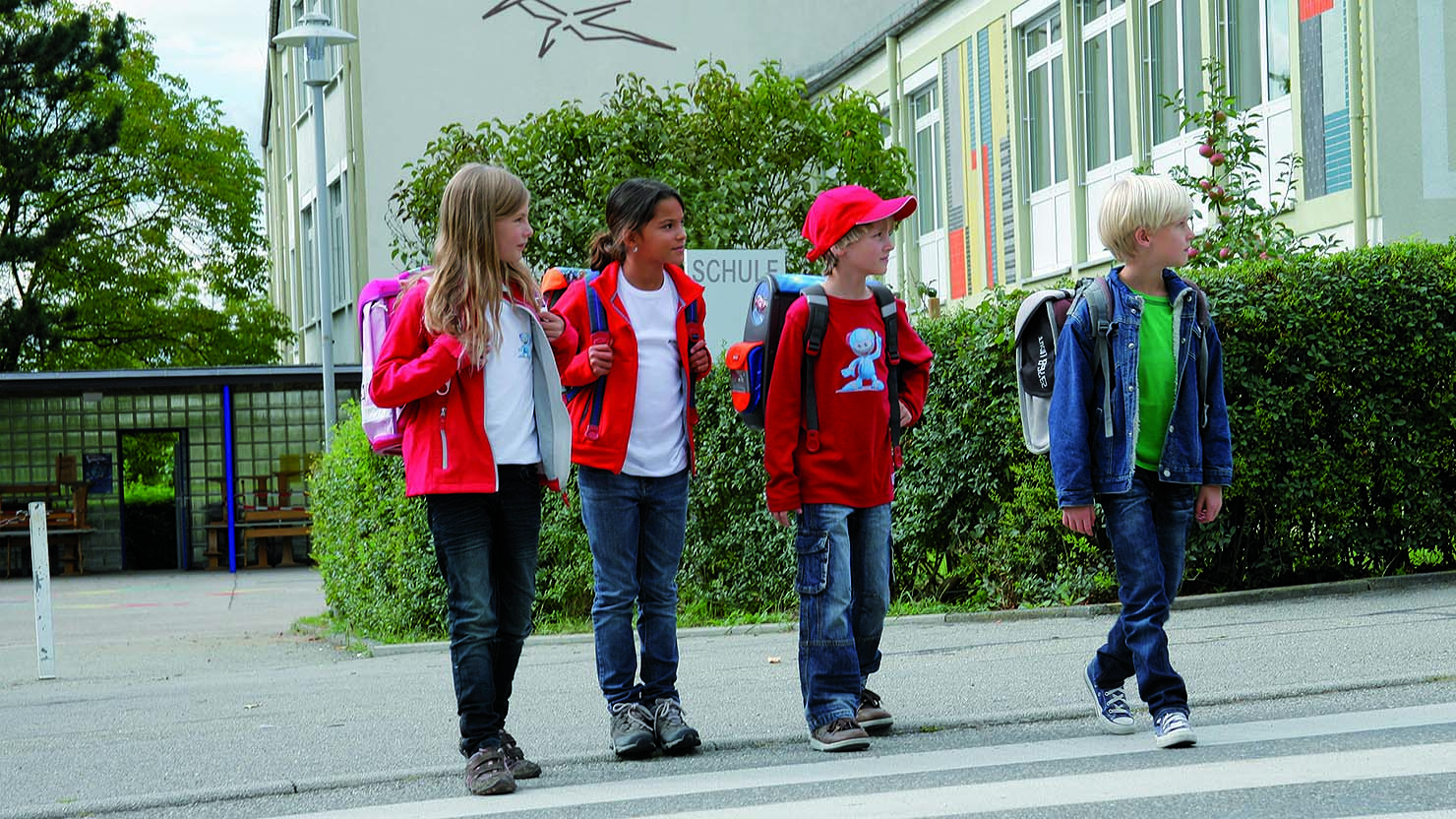The summer holidays in Germany and many other countries around the world end in the months of August and September - the new school year begins. Millions of children then make their way to school every day and take the streets to do so. Especially for the youngest among them, the pupils in Year Two who have just started school, this can be challenging at times, because up to now they have always been accompanied everywhere by their parents. "And yet, depending on the traffic situation, I recommend that children from the first year onwards manage their way to school on their own", says teacher Katharina Dausch from Rhineland-Palatinate, who has been accompanying girls and boys in road safety training for years and therefore knows what she is talking about.
Chatting before class helps
Children who walk to school benefit in many ways, according to Dausch. "The walk to school strengthens motor skills, health, concentration and especially social skills", says Dausch, emphasising the importance of the walk to school for children, who are much more balanced if they have already exercised and talked to friends before class. "When we adults come to work after the weekend, we first ask our colleagues how they are doing or what they did on their days off. Why then should I expect children to leave all that out and focus directly on the lesson"?

As few street crossings as possible
Crossing streets should be avoided as far as possible.
Suitable pavement
A continuous, wide and, especially in the dark season, well-lit pavement provides more safety.
Sufficient aids
Pedestrian crossings with traffic lights, zebra crossings or central islands make it easier to cross the street.
Few obstacles
Streets along busy cycle lanes, with parked cars or kerbside trees and construction zones are only suitable to a limited extent for the way to school. Equally true: the less traffic, the safer the children.
Dausch, who is herself a mother of two children, can of course understand that parents worry about their offspring, but she also knows that the way to school is doable for everyone with the appropriate preparation. "Parents should take enough time to go over what they should look out for on the way to school with the children, where possible dangers could lurk. Ideally, they even walk the route to school together with the little ones. Then you will quickly realise: children can already remember a way to school quite well", says Dausch, who calls for having more faith in children. True to the motto: practice makes perfect.
Light-coloured clothing for the dark time of the year
But practice alone is not enough; the right clothes also play an important role. According to Dausch, especially during the dark season, parents should make sure that their children wear light-coloured clothing - in particular on their legs, because these correlate with the light cones of the cars. Safety vests and reflectors on school bags also increase the visibility of the youngsters. "People often underestimate that when the school year starts, it is still nice and bright, but then it gets gloomy and dark very quickly, which is why children can easily be overlooked", warns Dausch.
Nevertheless, the former police officer and school teacher for children with special needs is convinced that the greatest danger in road traffic is not the children's mistakes, but those of other road users: "When drivers mess around on their smartphones or don't obey speed limits, it's much more dangerous than minor moments of carelessness on the part of the pupils". Every road user should therefore make themselves aware once again that the new school year is now beginning.

Walking to school is safer and much more fun when children can do it together with their friends. The "walking school bus" is a method for pupils to take a first step towards independently managing their way to school. Here, a group of children walks to school together in the morning and back home again in the afternoon. The "bus driver" is usually an adult who accompanies the children on their way. As with a regular bus, fixed stops are made on the way to school according to a fixed timetable. Here the group passes by at a set time and the children can "get on and off". In addition to the increased safety, the pupils also benefit from the fact that they are active and that concentration, independence and social interaction are promoted.
Teachers also have an important role to play when it comes to walking to school; after all, they are supposed to practise crossing the street with the children. "Many teachers are already doing this very well with their pupils in the first year", praises Dausch. "Most of the time you take the class out to the street during a lesson so that every child really gets some practice". It is particularly important to teach the children that it is always better to take a circuitous route and cross the street safely than to put themselves in danger at a blind spot.
Parent taxis are dangerous
Teachers also act as contact persons for parents. The so-called zeroth parents' evening, which takes place shortly before the children start school, is a particularly good opportunity to give them tips on how to determine the perfect way to school for their child. "In addition, teachers should always point out to parents how important it is for children to get to school independently", says Dausch, who is also happy to point out to parents that they should not drive their children to school too often.
"Of course I can understand taking the car to school from time to time, but it should not become a habit", says Dausch, alluding to the problem of parents' taxis, which regularly create traffic chaos and an additional source of danger in front of school buildings. That is because if parents park in the second row, at the bus stop or in a no-parking zone, and the children then get out facing the street, the risk of accidents increases tremendously.

School crossing guards have existed in Germany since 1953. These are mostly older pupils, parents or pensioners who, on a voluntary basis, secure the way to school for the younger and more inexperienced pupils at dangerous points and help them cross the street safely. There are about 50,000 school crossing guards throughout Germany.
School bus attendants secure the waiting area at bus stops, help with getting on and off the bus and make sure that none of the pupils misbehave during the journey. There are also such school bus attendants in Spain.
Source: Verkehrswacht







